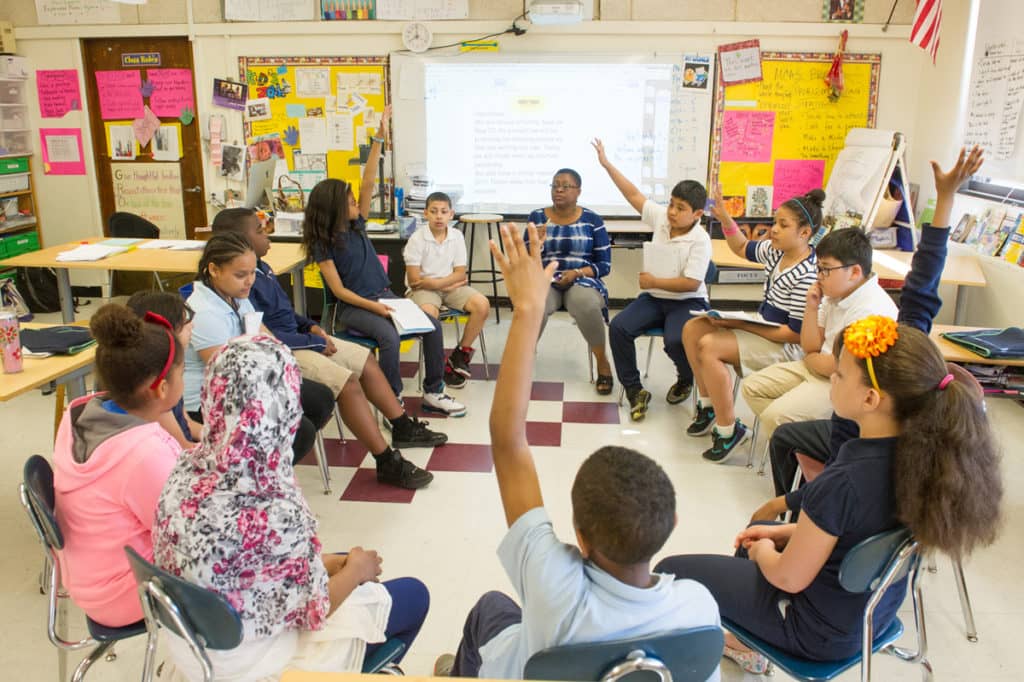For people who have taken the necessary steps to pursue a career in academia, a common hurdle is often found in making mundane material sound interesting. Some things that are very important to learn are, simply put, boring to most people, and creativity is needed when delivering these lessons and messages whose importance outweighs their amount of engaging information.
Many schools are expected to continuing offering remote education for the students who excelled during COVID-19 stay-at-home orders. This remote aspect adds yet another piece to the proverbial puzzle of creating excitement surrounding certain topics. Here are six things you can do with your class to help make those mundane lessons have a little more pizzaz.

Here Are 6 Activities You Can Do to Make Your Lessons More Interesting
Learn With Your Students:
There is obviously a certain level of preparation that needs to go into any sort of lesson, but one way to show excitement surrounding a topic is by truly being excited. Setting up your lesson to involve some discoveries about a subject that are also new to you as the teacher makes it more exciting for you, and that generally resonates with an audience. An example would be adding a short video that is credible, positively reviewed, and deemed age-appropriate for your audience but not actually watching it until you are with your class. Tell them this, too, so they know to look for your sense of wonder.
Laugh With Your Students:
There is another line to toe between fun and disruption, but providing clear guidelines for your students while simultaneously encouraging them to have fun is a great way to keep them engaged. There are very few subjects that are off-limits for jokes (certain parts of history, of course), and weaving a few in here and there can help your students’ minds stay fresh.
Let Their Thoughts be Heard:
Sometimes a lesson becomes boring for teachers because it has been repeated so many times, and just like excitement on the good end, this boredom is often difficult to hide and can jump hosts onto your students. One thing that students can provide is new perspectives on an old topic, which often sparks conversation and peer interests. As a bonus pertaining to professional development, picking random students to discuss their thoughts can also help you spot the ones who may not be comprehending the material very well but are too shy to mention it.
Be Reachable:
This was another silver lining of the COVID pandemic. Rules and regulations regarding teacher-student communications outside of the classroom had to be relaxed given the fact that there were no classrooms. This led to a recognition that many students are a lot more open about their struggles when they can say so from the comfort and security of their homes. Pertaining to engaging lessons, it’s more of a “big picture” thing, as students who trust their teachers stay more engaged with those teachers during class. Tell your students that they can email you any time, and keep those notifications on! Be sure to let your class know of times when you will not be reachable, as well, so they don’t feel ignored.
Random Reviews:
Students do seem to strap in and pay attention is for review time, but even as students recognize the importance, repeated material can be even harder to pay attention to. Making material reviews more random doesn’t allow for students’ minds to get in the “I already learned this” mindset, so be whimsical with your subject reviews, and deliver the material in a different way than you did the first or second time.
Shyamalan Your Teachings:
Director M. Night Shyamalan has made a lot of money by mixing up the order in which he tells his stories. This can also be a successful way to keep your students engaged. It’s also subject-dependent, but for thought-provoking material, having your students take a test without ever reading material can serve as a good way to get more “why?” questions out of your students. You may have a lot of upset students if these tests are graded, though, so that part is not recommended!
Ultimately, diversifying your approach in any and every way you can is the best way for continued engagement in the classroom, both digital and brick-and-mortar!
Posts You May Like to Read:




